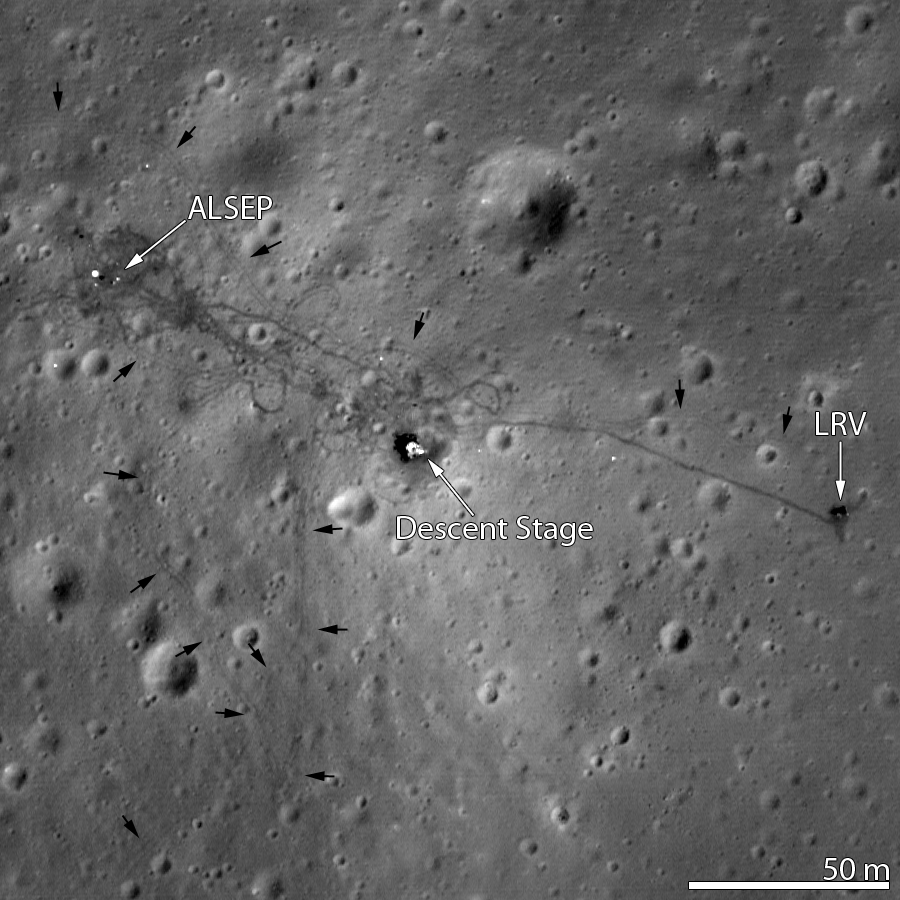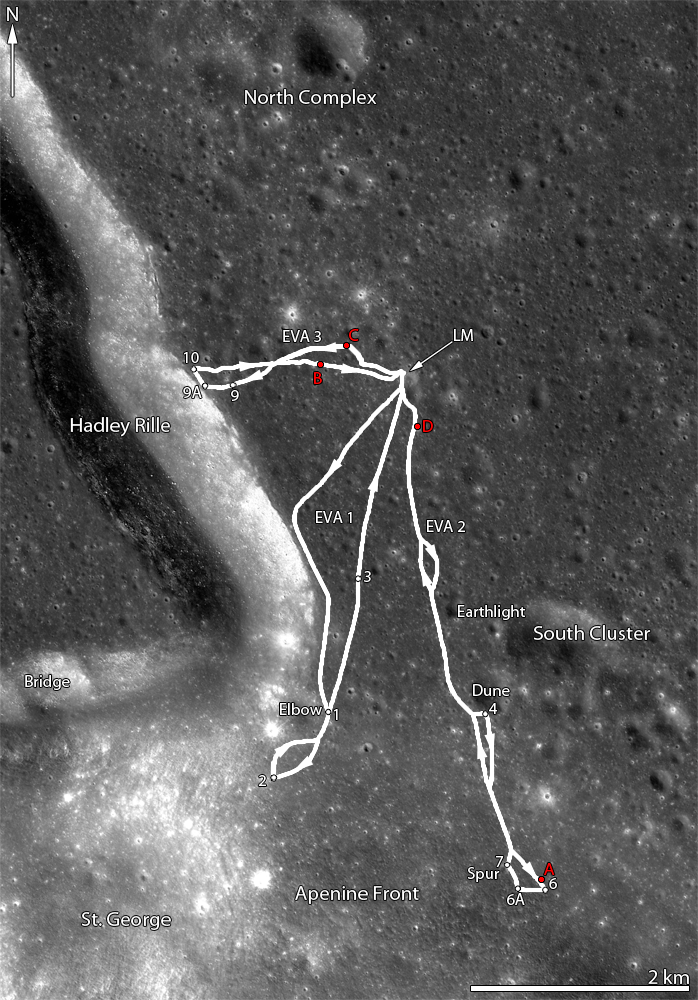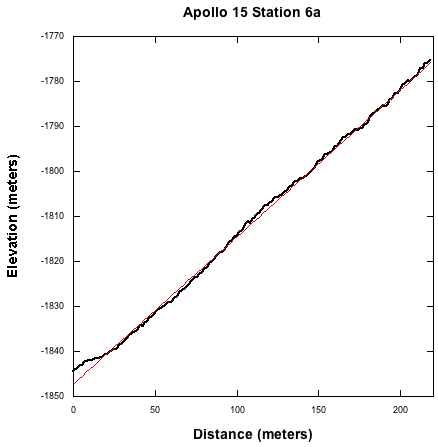
The Apollo 15 Lunar Module (LM) Falcon set down on the Hadley plains (26.132°N, 3.634°E) a mere 2 kilometers from Hadley Rille. The goals: sample the basalts that compose the mare deposit, explore a lunar rille for the first time, and search for ancient crustal rocks. Additionally, Dave Scott and Jim Irwin deployed the third Apollo Lunar Surface Experiments Package (ALSEP) and unveiled the first Lunar Roving Vehicle (LRV). The ALSEP consisted of several experiments that were powered by a Radioisotope Thermoelectric Generator (RTG) and sent back valuable scientific data to the Earth for over six years after the astronauts left. This new LROC NAC image taken from low altitude shows the hardware and tracks in even more detail.
The LRV, a lunar "dune buggy", allowed the astronauts to traverse far from the LM and explore much more local geology than the astronauts on previous missions (Apollo 11, 12, 14). Not only did the LRV allow the astronauts to move from place-to-place at a lively rate of eight to sixteen kilometers per hour (five to ten miles per hour), but the LRV also allowed brief periods of rest that in turn helped to conserve oxygen.
The LRV wheels were 82 centimeters (32 inches) in diameter, and 23 centimeters (9 inches) wide. Typically LROC NAC pixels are about 50 centimeters square, so it is not always easy to pick out the LRV tracks. In previous LROC images, the LRV tracks are usually only visible near the LM where the descent engine exhaust plume disturbed the surface. The LRV wheels broke through the changed surface and thus the tracks have more contrast near the LM.
For two one-month periods last year (2011), the LRO orbit was lowered such that overflights of the Apollo sites were only 25 to 30 kilometers, rather than the usual 50 kilometers. These low passes resulted in NAC pixel scales near 25 centimeters! LRO has a ground speed of a bit over 1600 meters (5249 feet) per second, and the shortest NAC exposure time is 0.34 millseconds, so images taken from this low altitude are smeared down track a bit. However, the smear is hardly noticeable and features at the Apollo sites definitely come into sharper focus. In this new low-altitude NAC image of the LRV, tracks are visible about half of the time, usually when the tracks are at an angle to the Sun direction, rather than parallel.
It was during Apollo 15 that the rover was driven on the steepest slopes while exploring the base of a mountain named Hadley Delta (it was named Delta because of its shape, not because it was a river delta). In fact at Station 6a, as Dave Scott stepped off the rover, it started to slide downhill. He was able to grab the rover and stabilize it with no problem.
How steep is steep? At the time, the astronauts estimated the slope at Station 6a between 15 and 20 degrees. With NAC stereo observations the LROC team is able to make detailed topographic maps (see below). Instead of estimating the steepness of the slope, we can now measure the slope.
Following the tracks of Irwin and Scott is a lot fun - join the adventure!
Previous Apollo 15 Featured Images:
Hadley Rille and the Mountains of the Moon
Retracing the Steps of Apollo 15
The Apollo 15 Lunar Laser Ranging Retroreflector
Published by Mark Robinson on 5 March 2012




